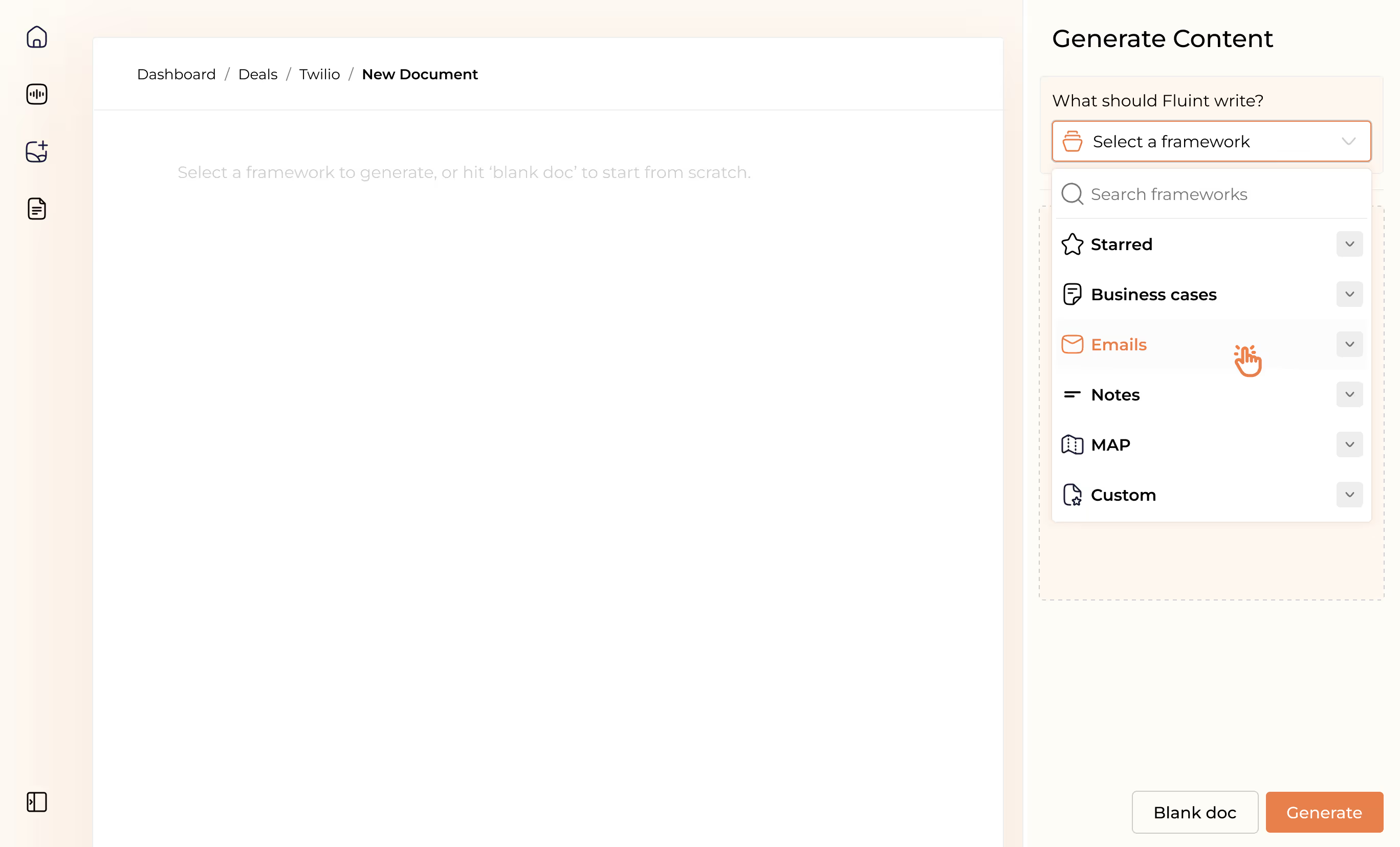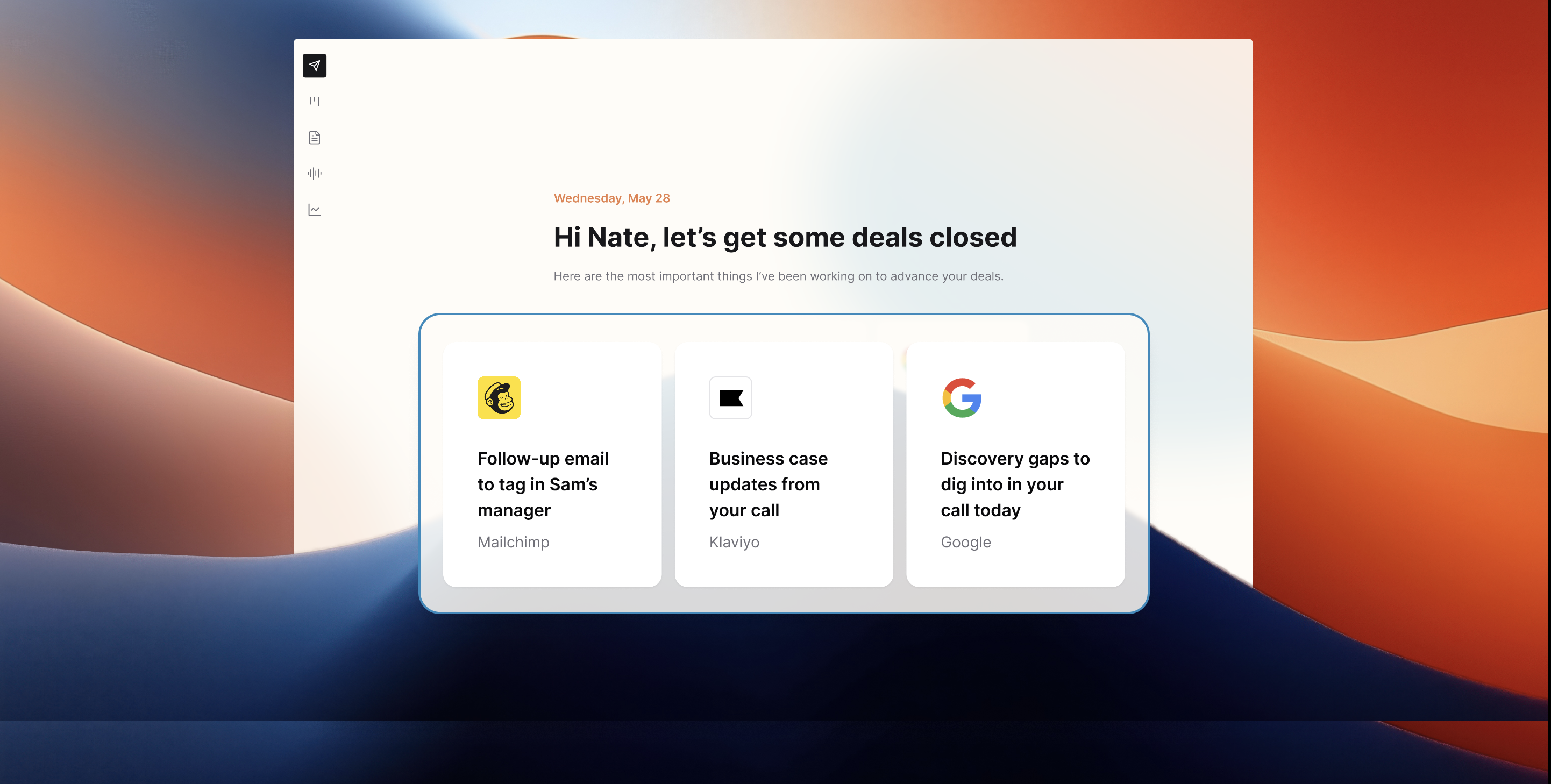Brief and Brilliant: How to Sell 6-Figures in 3 Bullet Points


"I don’t read PowerPoint decks. Just give me 3 really good bullet points."
That's what Gregg Scoresby said while I was sitting in the PHX Ventures conference room late last year.
I was asking how he bought software as the CEO at CampusLogic ($197M raised, successful exit), before starting their Venture fund.
(After that meeting, PHX Ventures became an investor in Fluint 🙌)
As just one example, he described how his team sold him on a major, 6-figure purchase with Gainsight. To help build their customer success approach.
They gave him 3 crisp bullet points that included:
- Why was investing in the overall category a pressing need, now?
- How, specifically, would they measure its impact on a major CL initiative?
- Who else did he personally know that had successfully rolled out Gainsight?
So his decision to invest in Gainsight was based on:
- 3 bullet points, not 30 slides.
- A single page, not a PowerPoint.
- All the research and intention from his team.
In other words, if you only have 3 bullet points to land your message, you’d better get them right.
You’d need to do more discovery and editing — not less. Which is the funny reality of selling to executives:
Your #1 job is to compress the deal into short soundbites.
To avoid diluting your message, while making the most of a short few minutes.
This isn’t just a “Gregg” thing, by the way. This is an executive thing. Your deal will always comes down to just a few, short sentences.
Do you know which soundbites your champions are selling with?
The Anatomy of Effective Bullet Point
Neil deGrasse Tyson has figured out the practice of communicating in bullet points. Short, quotable soundbites that grab and hold attention.
But that wasn’t always the case:
In 1995, he became the interim director of the American Museum of Natural History. The same year the science community had a big breakthrough:
They discovered the first ever planet orbiting a star, which wasn’t the sun.
So NBC approached him for an interview. Excited, he gave his best “professorial reply,” then ran home to catch the interview on TV.
But they cut out almost all of his interview.
Instead, all they left was a single soundbite and him doing a hula hoop dance to describe the planet’s orbit.
Which lead to an “aha” moment:
“…even though they're interviewing me in my place, it's actually for them, in their place. And in their place, soundbites rule.
So I said, rather than have them soundbite me, why don't I hand them soundbites? They can't edit that. They gotta use them as soundbites.”
So what’d he decide to do?
I just barked out Saturn, rings, black hole, Big Bang, Alpha Centauri… and for every one of those words, I said what are three sentences I can put together that are informative, make you smile, and are so tasty you might want to tell someone else?
There is the anatomy of a soundbite.
He cut out the full “science curriculum” in his messaging. Instead, he:
- Identified a series of single words that captured his big ideas.
- He crafted three simple sentences (bullet points) for each.
- He made sure each bullet was, (1) informative (2) delightful (3) shareable.
In the full interview here, you can hear him say:
A soundbite is useful because it triggers interest in someone, who then goes and puts in the effort to learn more…
Take the moment to stimulate interest, and upon doing that you have set a learning path into motion that becomes self-driven because that soundbite was so tasty — why do you think we call them bites?
Applied to complex sales, the point isn’t that you shouldn’t create more content than 3 bullets to help your champions sell.
You can and should. But things like…
- ROI / financial models
- Technical diagrams
- Rollout plans
…don’t matter without a few tasty soundbites to generate interest.
How to Craft Snackable Soundbites
We’ll go back to Tyson here. Later in the interview, he says:
I feel like Michelangelo who said, “When I make a sculpture, I just chisel away everything that isn’t the man or the woman, and then that’s what’s left.”
The same idea applies to your writing.
So how do you create 3, tasty bullet points from an entire deck?
You trim, you carve the words such that all that’s left is the most important concept communicated in the simplest, most direct way.
You can “trim” your writing by taking a highlighter to your document:
(1) Highlight in Red everything that’s not:
- Adding a non-obvious or uncommon insight.
- Surprising for the reader to see.
- Shareable in a short tweet.
(2) Highlight in Green everything that’s:
- Data from the buying team.
- Internal language specific to the account.
- Directly edited or added by your champions.
(3) Highlight what’s left in Yellow.
- This is the stuff you’re not sure fits into either bucket.
- Show it to a colleague or champion, and ask for Red vs. Green.
When you’re done, copy everything that’s Green into another document.
Then, organize them into three bullet points.
If you need, you can use Gregg’s framework from above:
- Why is investing in your overall product category a pressing need, now?
- How, specifically, will you measure your impact on a major executive initiative?
- Who else can you reference in the customer’s space with a successful rollout?
If you’re using Fluint, you can ask the system to give you a little assist.
You’ll already have a head start by using the Business Case frameworks, to turn all your notes, call transcripts, and research into a 1-Page draft:
FAQ's on:
Why stop now?
You’re on a roll. Keep reading related write-up’s:
Draft with one click, go from DIY, to done-with-you AI
Get an executive-ready business case in seconds, built with your buyer's words and our AI.

Meet the sellers simplifying complex deals
Loved by top performers from 500+ companies with over $250M in closed-won revenue, across 19,900 deals managed with Fluint

Now getting more call transcripts into the tool so I can do more of that 1-click goodness.



The buying team literally skipped entire steps in the decision process after seeing our champion lay out the value for them.


Which is what Fluint lets me do: enable my champions, by making it easy for them to sell what matters to them and impacts their role.








